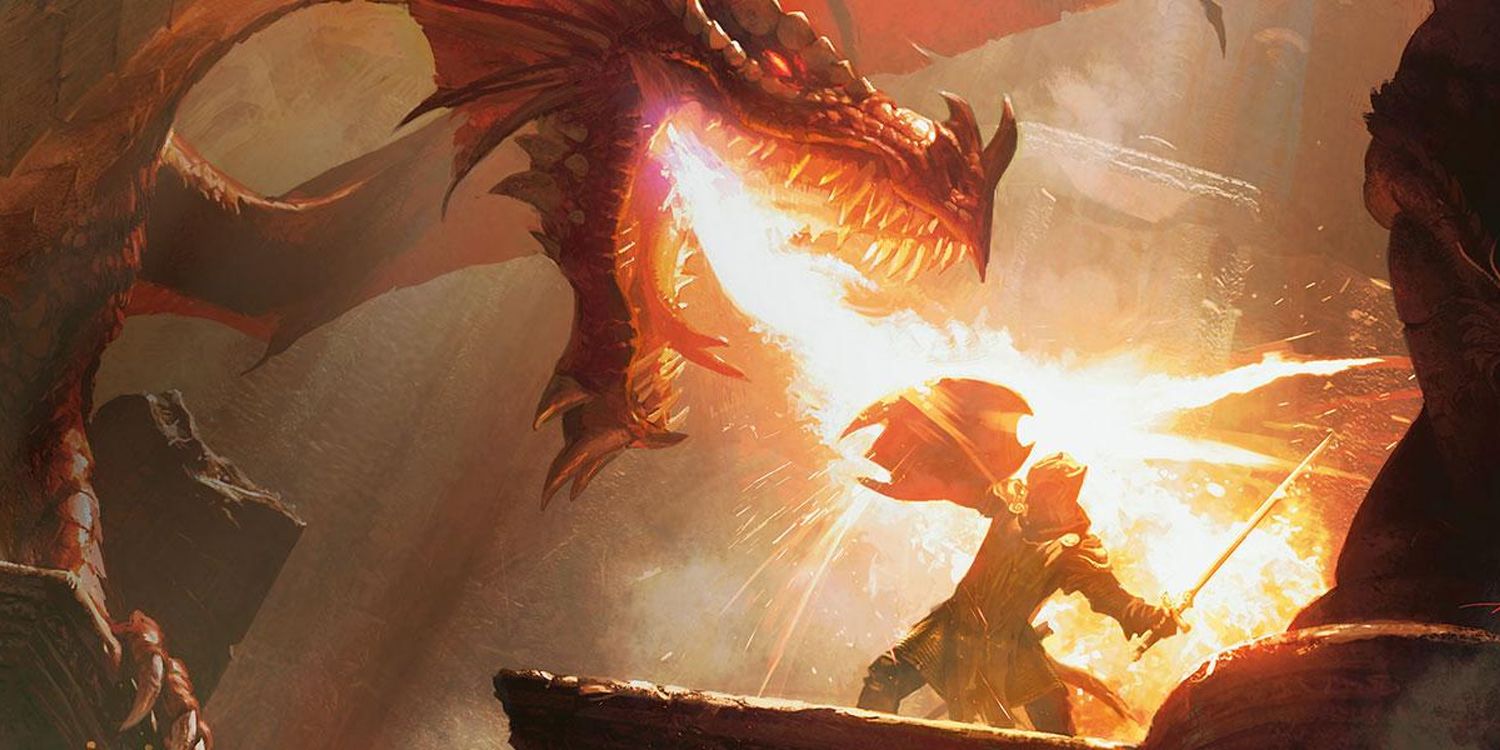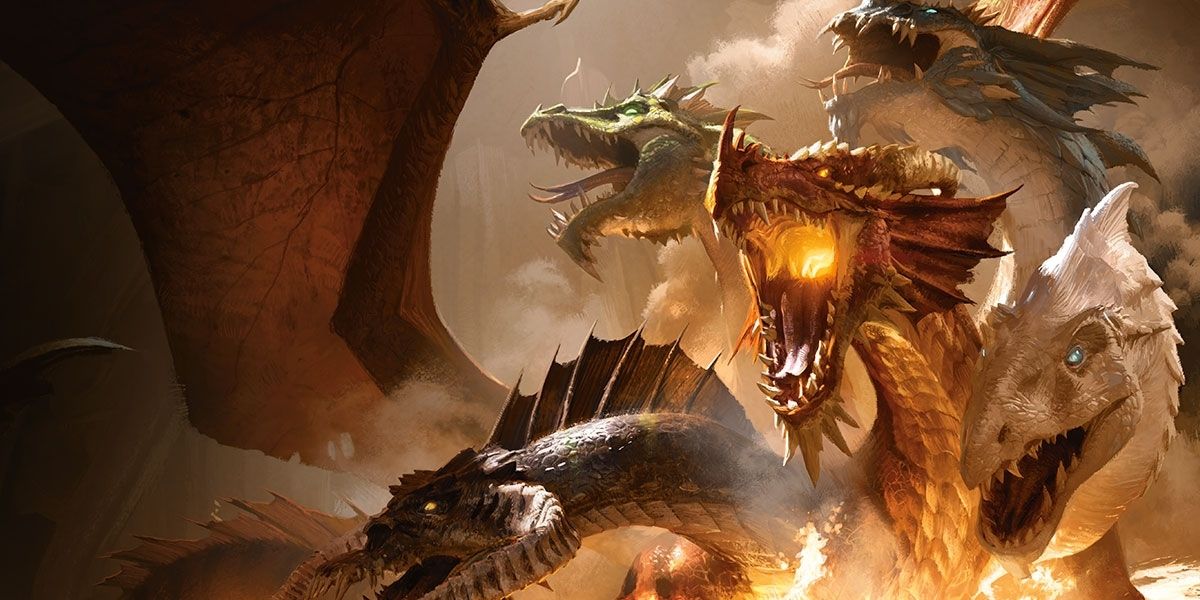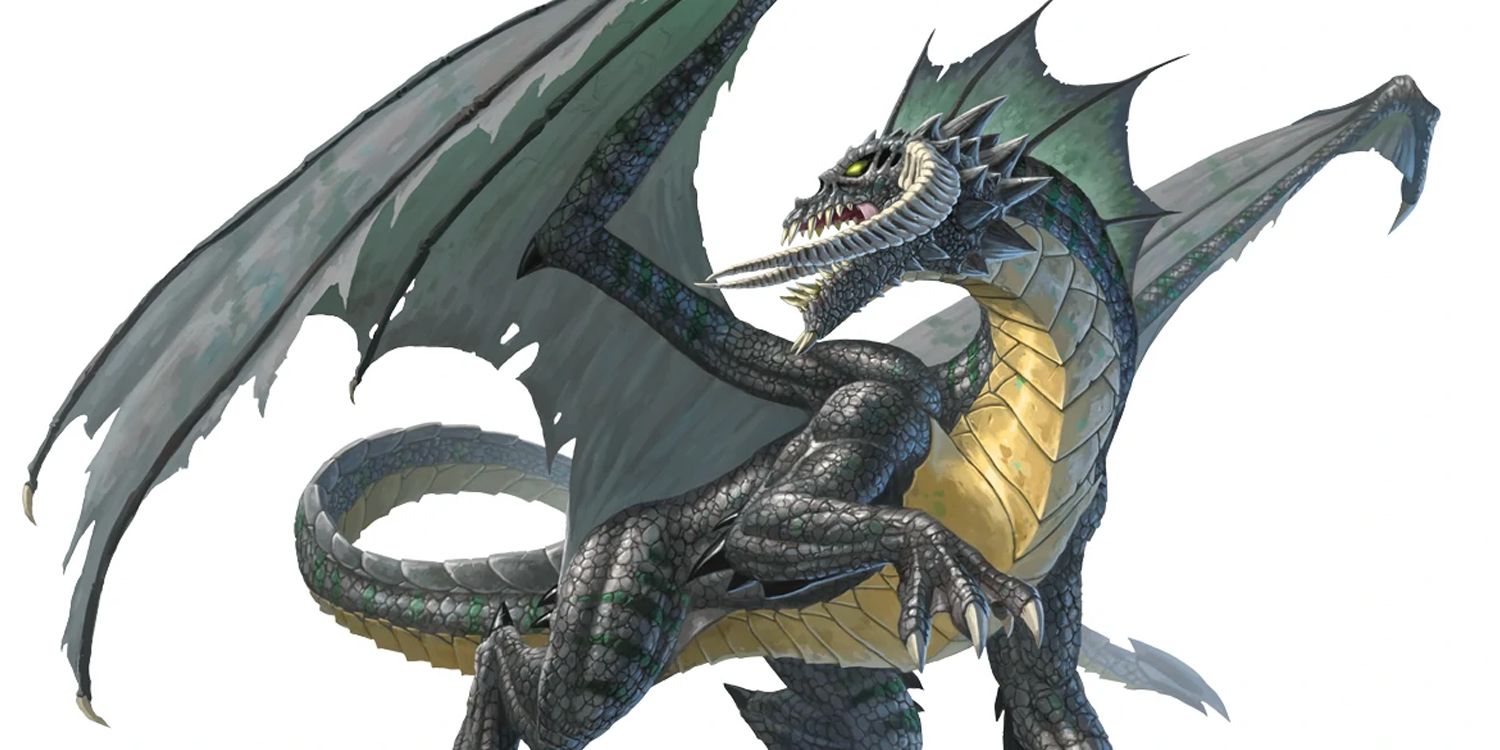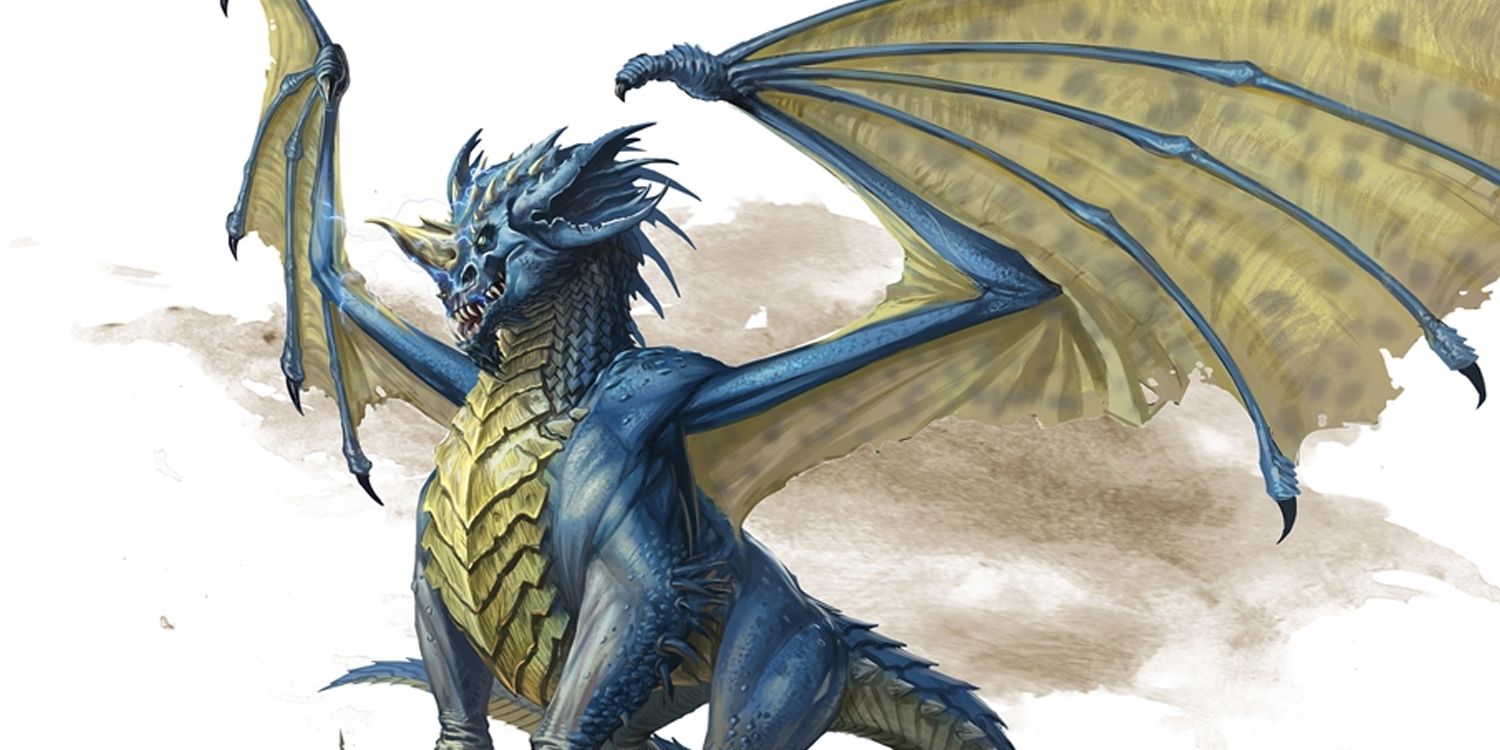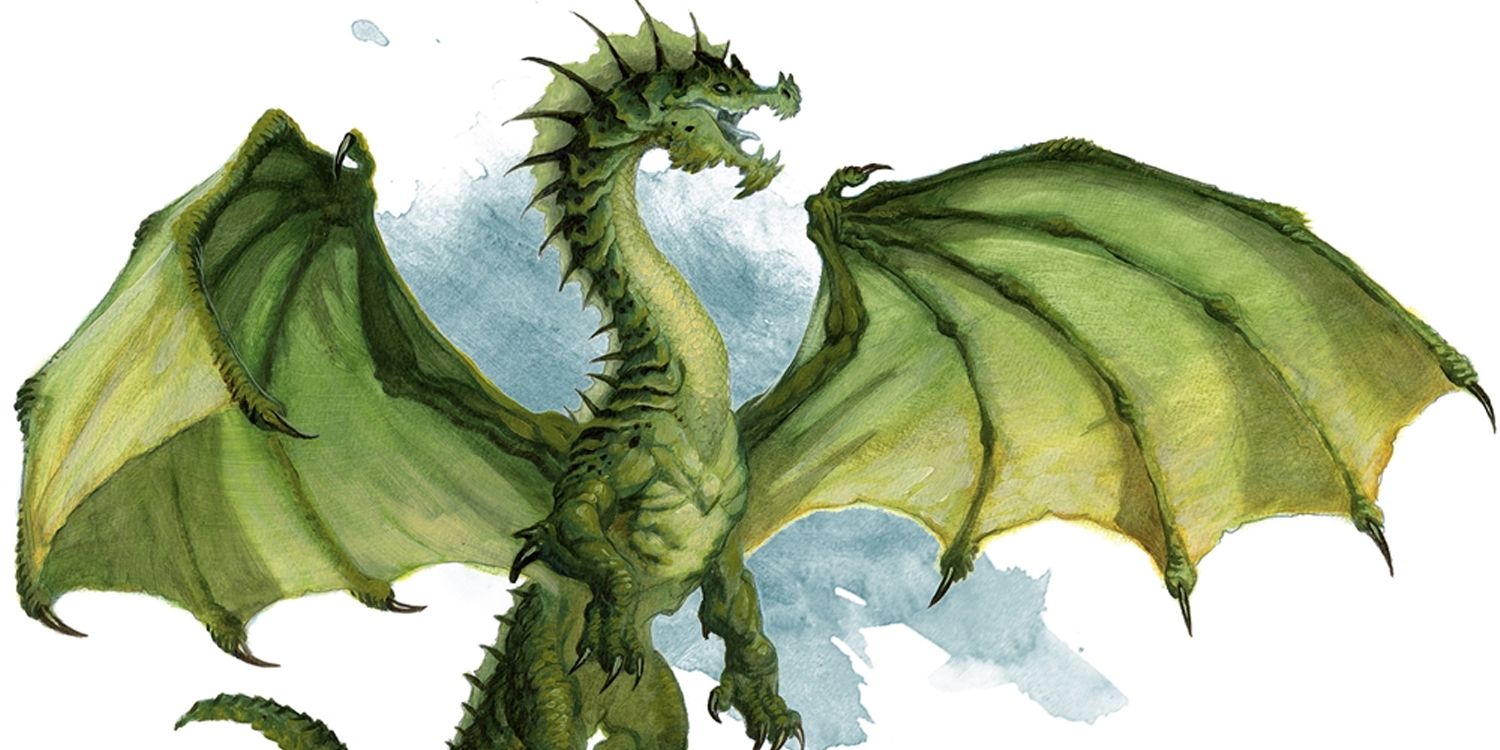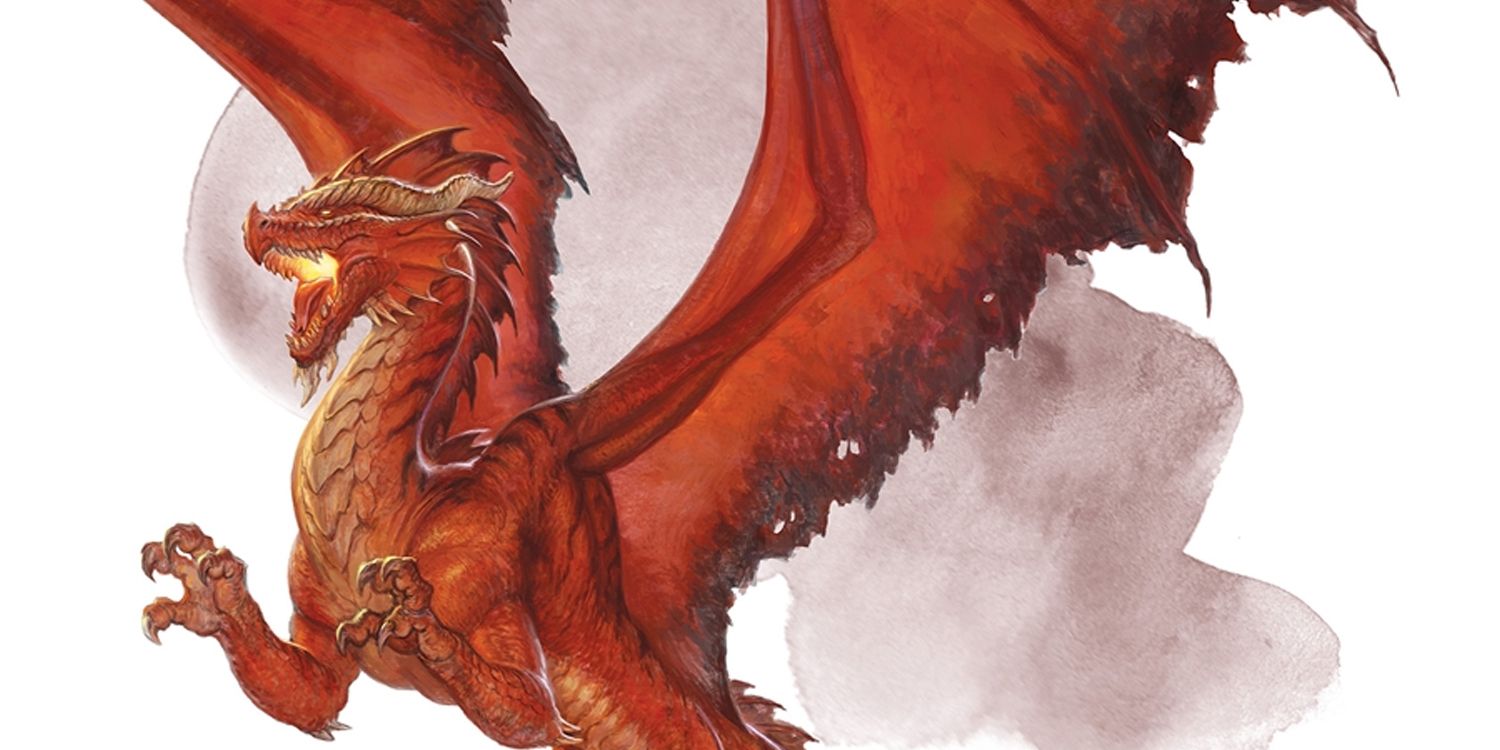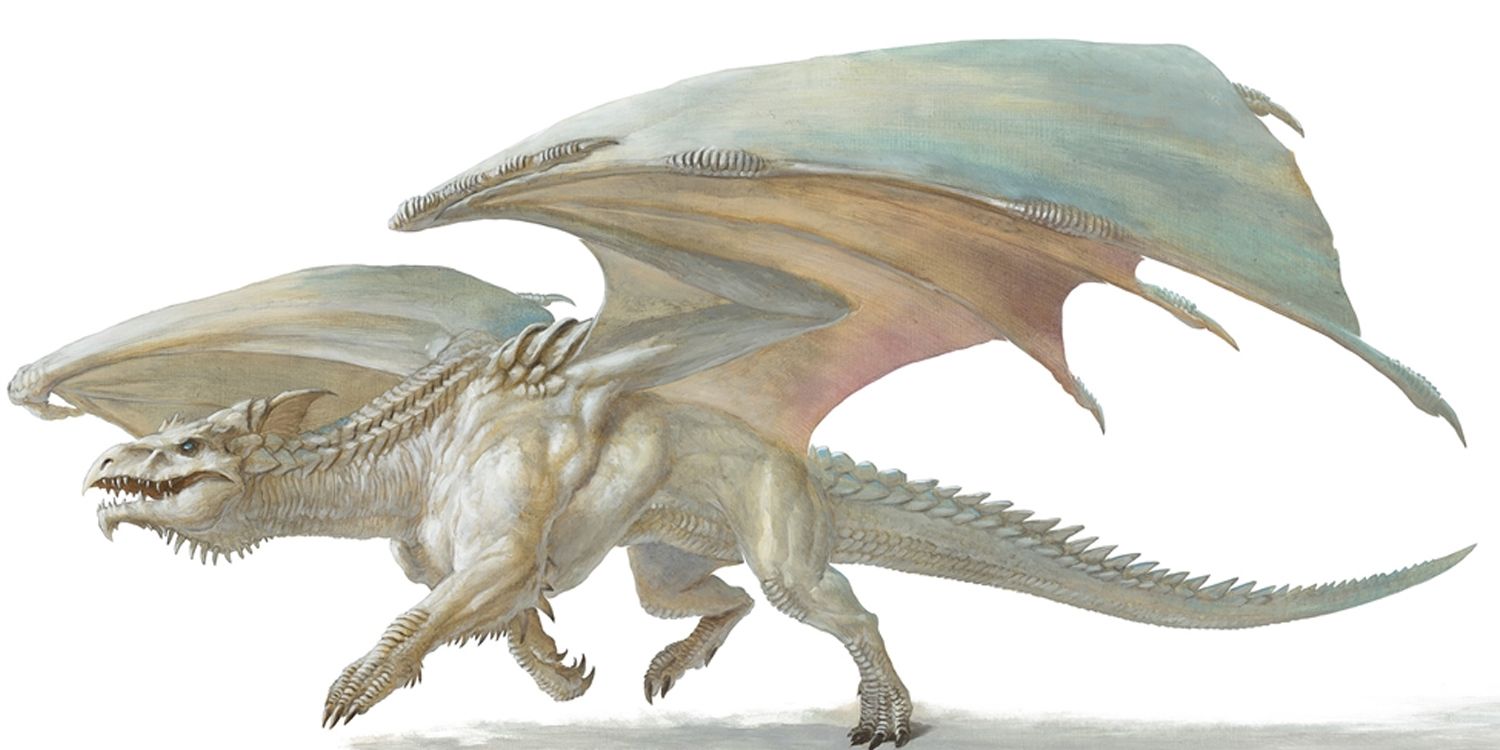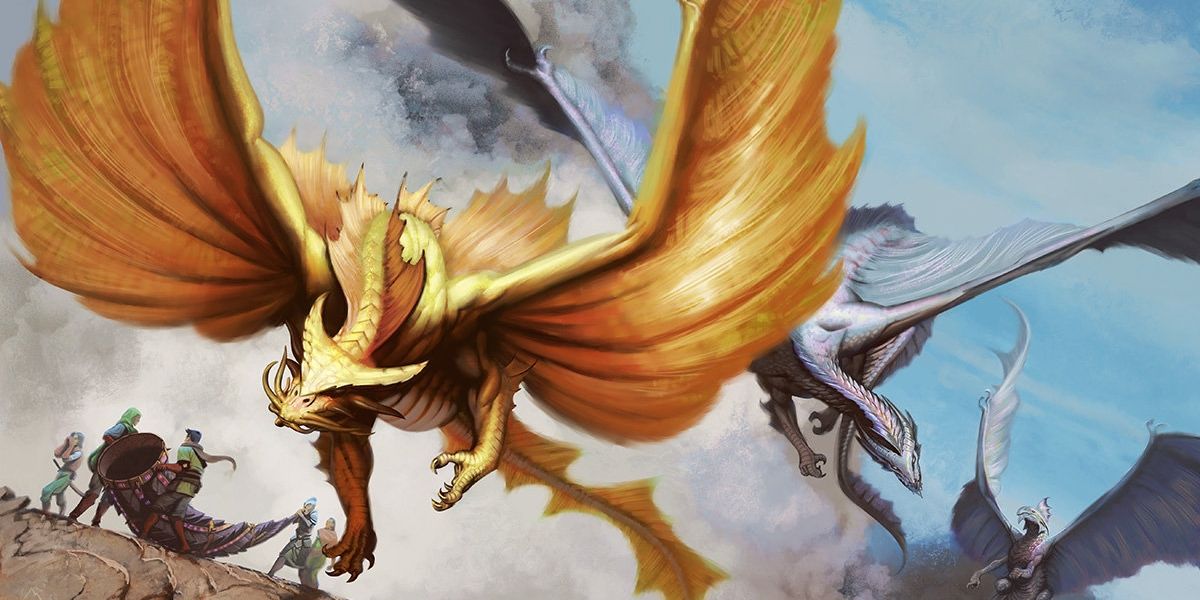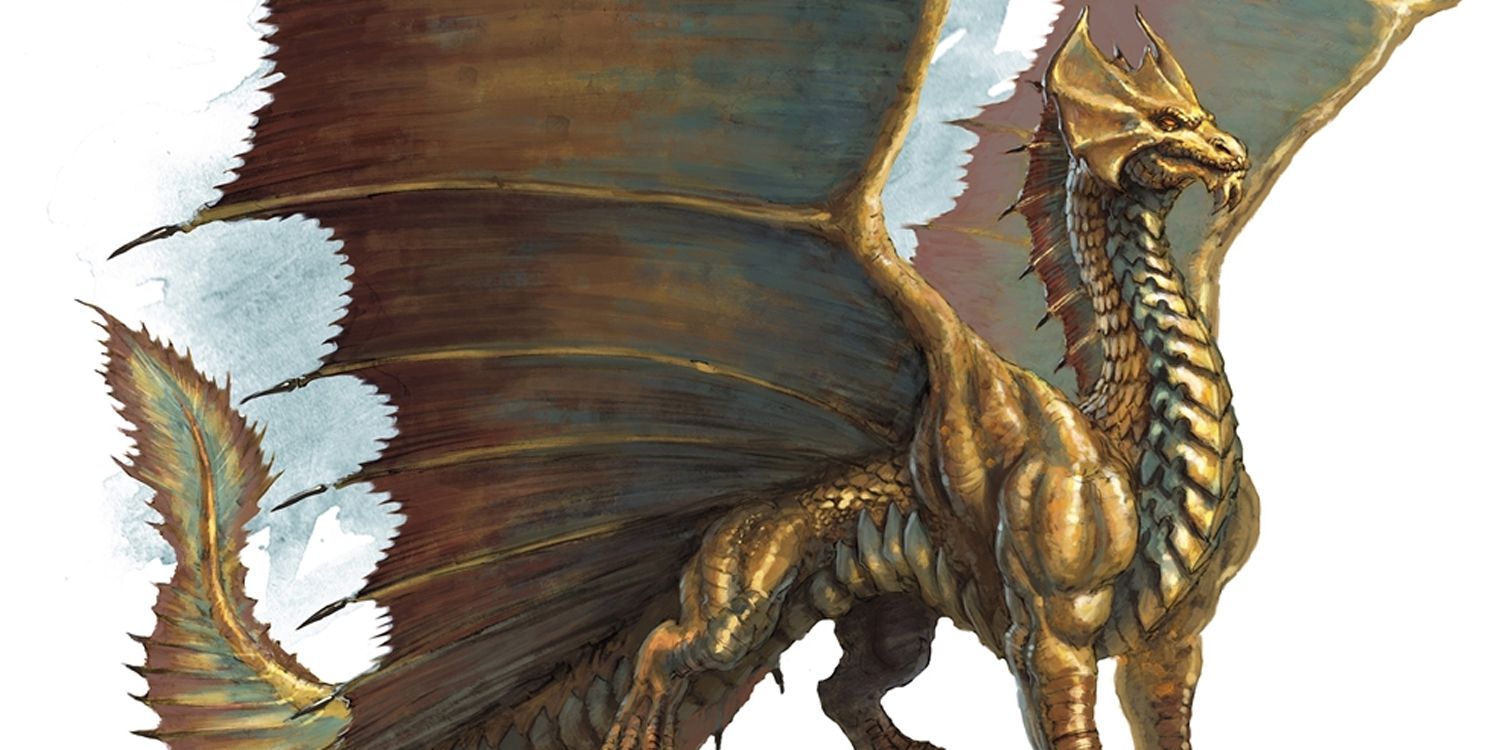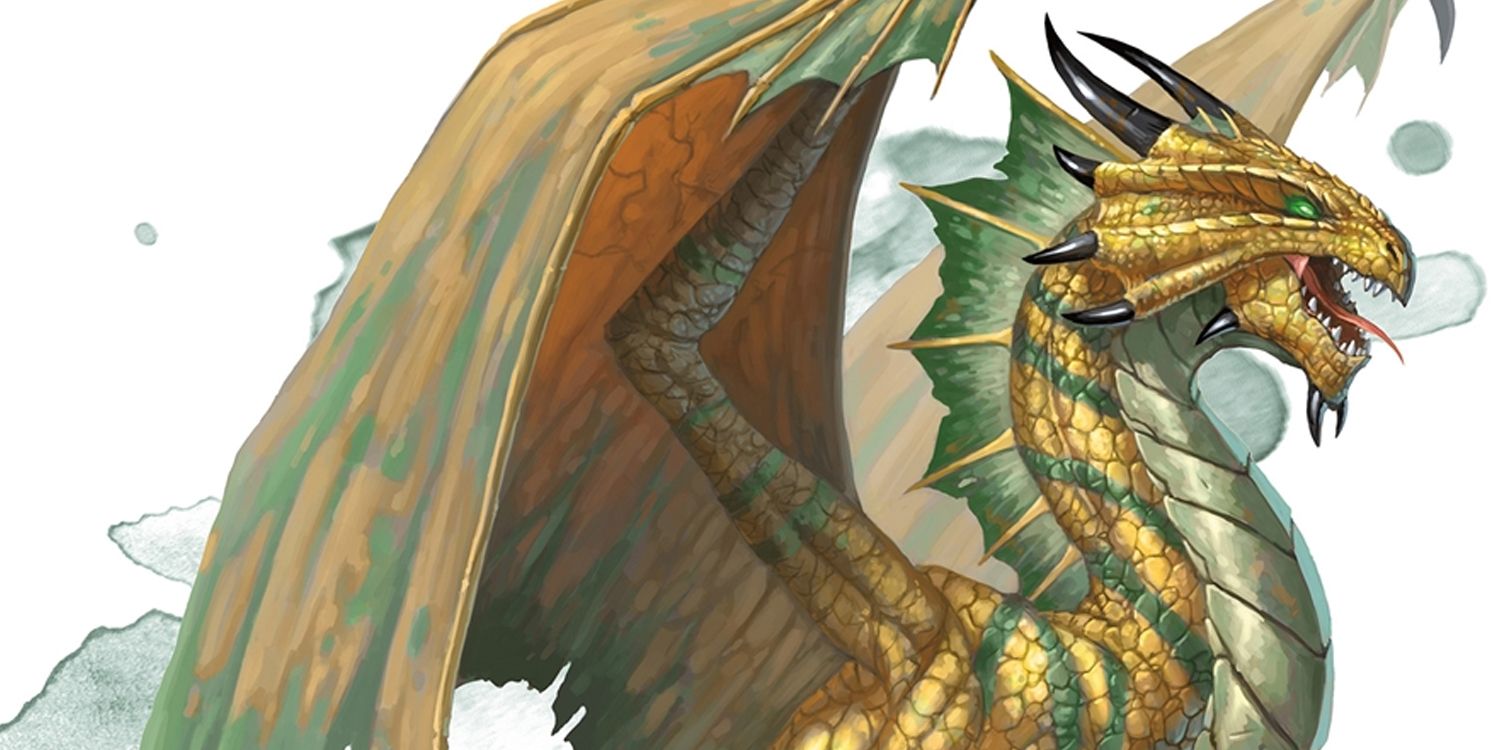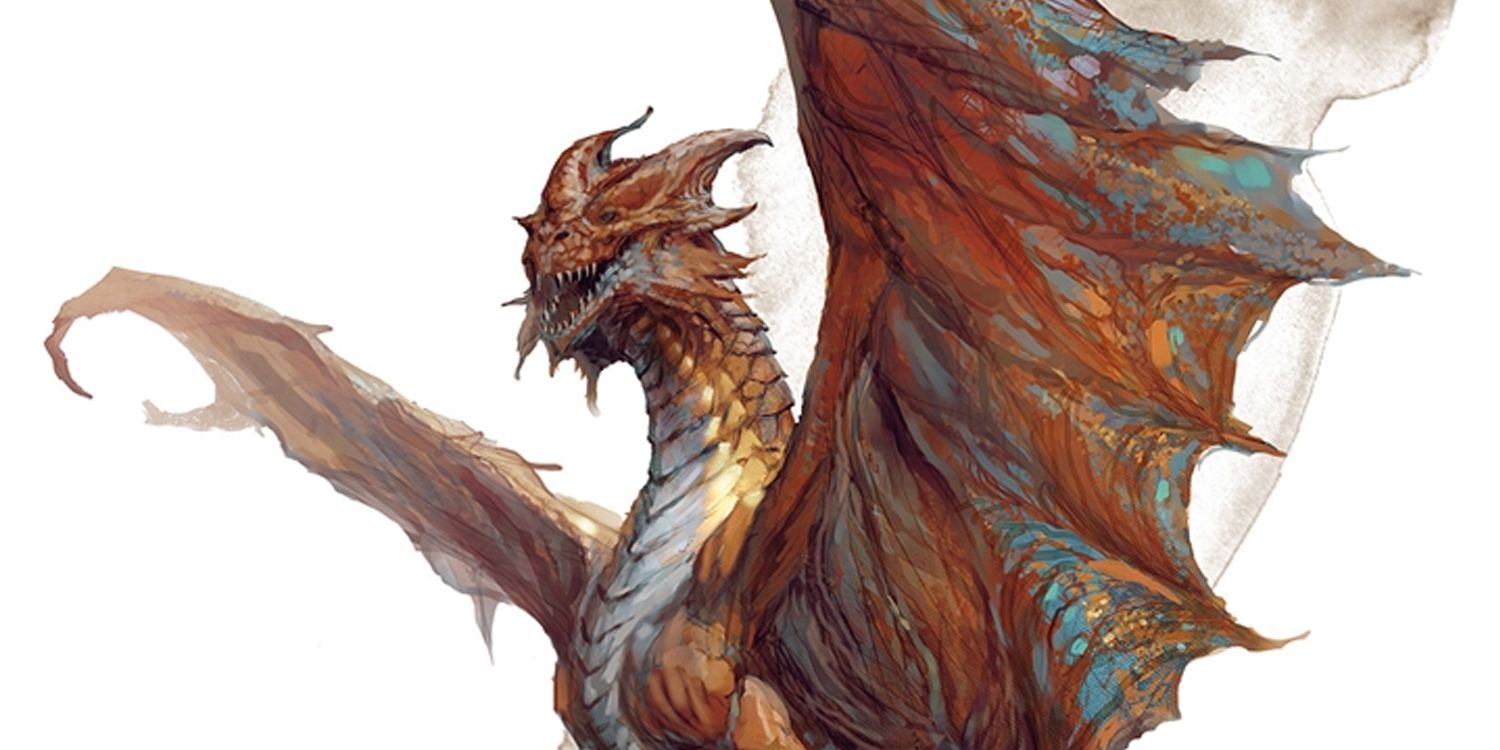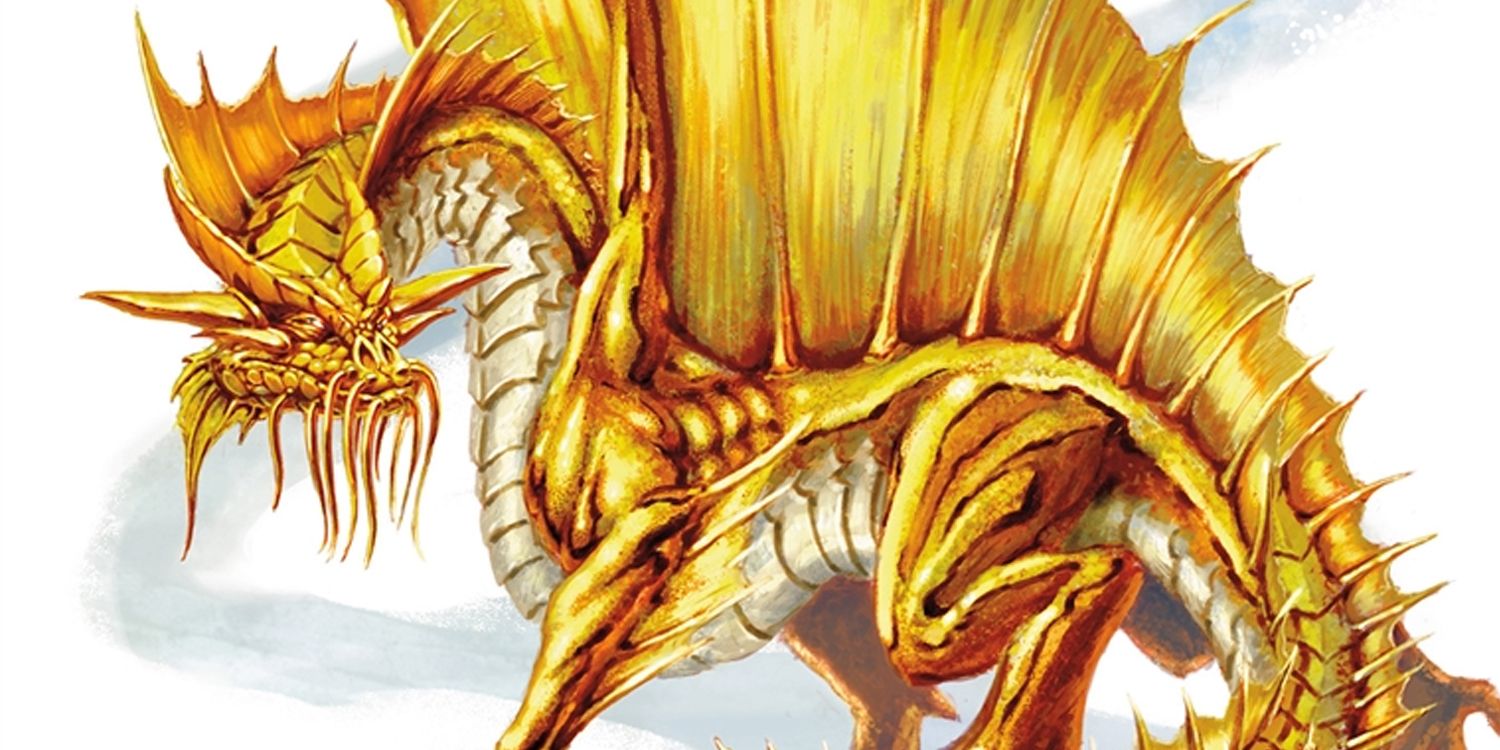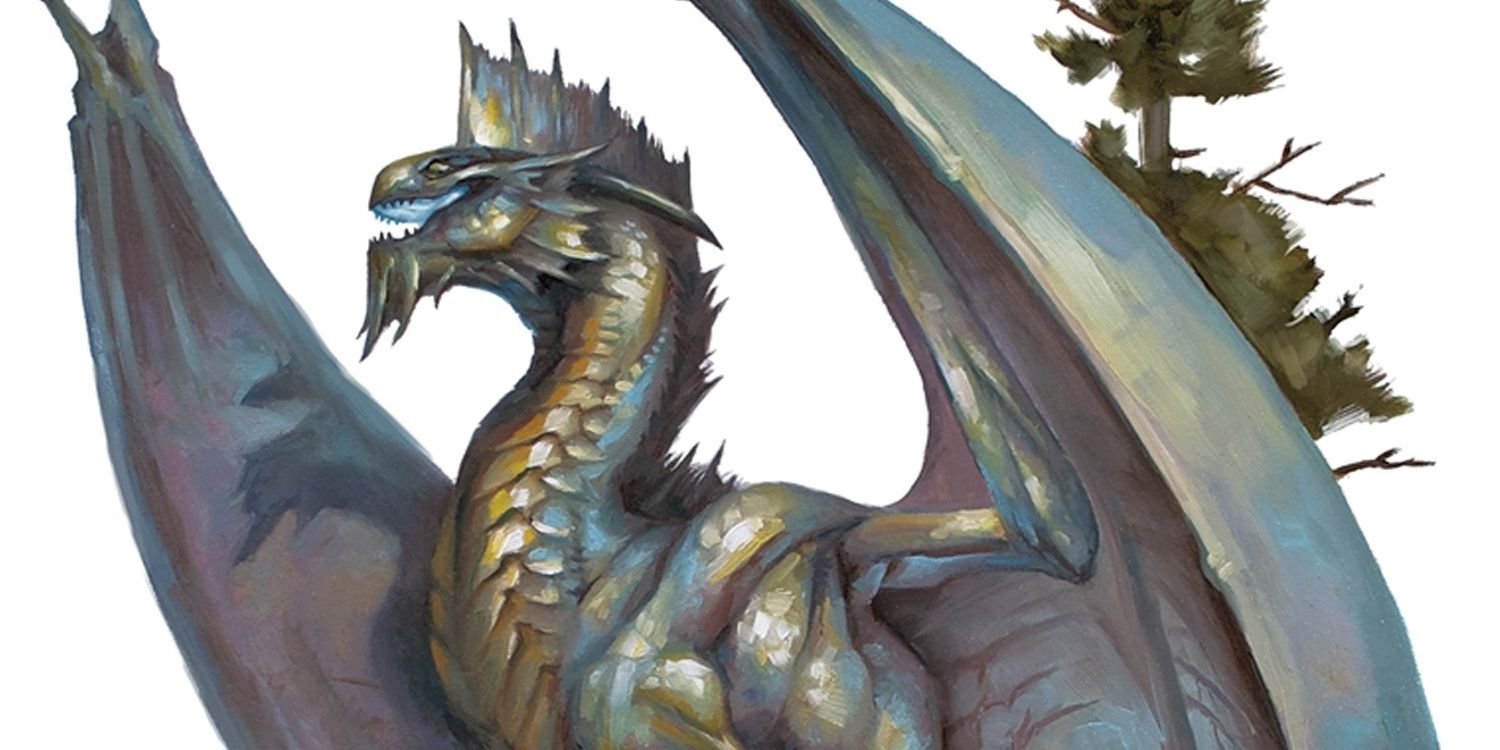The dragons of Dungeons & Dragons are towering, sentient creatures of immense magical potency that live for centuries, growing larger, and more dangerous, as they age. They are cunning, proud, deeply intelligent, and devastating to their foes.
While the immediate reaction of most adventurers might be to slay the dragon, not all are created equal. In a notable departure from their appearances in popular fantasy series, including The Lord of the Rings, some dragons side with the forces of good. In D&D, the best way to recognize what type of dragon has appeare is by looking at its color. The color of a dragon generally ties in to its alignment, with relatively few exceptions to the rule. Knowing what type of dragon a group is facing could make the difference between victory or defeat.
Chromatic Dragons Worship Tiamat and Live for Destruction
These nasty villains are driven by pure ego, which stems from their worship of the evil goddess of dragons, Tiamat. She believes the wealth of all the multiverse is hers, and her children keep hoards of treasure to honor her. Each color of chromatic dragon stems from one of Tiamat’s five heads. Their lairs are always in remote, or dangerous, places, and frequently populated by traps and servants. To Chromatics, humanoids are merely cattle. Only the bravest players can face one and survive.
Black Dragons Are the Cruelest and Most Depraved
The vilest and most abusive of the Chromatics, black dragons take pleasure in bullying the weak. Known for their extreme sadism, black dragons love to make their prey beg for mercy. They are also incredibly jealous and paranoid of other dragons, attacking weaker rivals, and fleeing from stronger ones. Black dragons make their homes in swamps, and they are sometimes worshiped by evil Lizardfolk or Kobolds. They tend to hoard ancient treasures from long-lost empires. Watch out for their acid, which can melt an adventurer down to their bones.
Blue Dragons Live in the Many Barrens of Toril
These winged terrors are the scourge of the deserts, breathing lighting down upon the caravans, settlements and nomadic folk who brave the sands. They reside in barren places, using their lightning breath to craft networks of crystalline tunnels beneath the dunes. Blue dragons are discreet, hiding their lairs and trusting few humanoid agents. They lure assassins, wizards and more to their service by offering the gems they hoard and covet as payment.
Green Dragons Are Manipulators Who Poison Their Enemies
Devious liars who terrorize the forests beneath them, green dragons are among the more common. They are notorious grifters and manipulators. And while they will attack animals without provocation, they prefer to intimidate or play head games with sentient beings to get what they want. While they enjoy treasure as much as the next dragon, their true hoard is the sentients who they bend to their will. They particularly enjoy corrupting heroes, well-known sages and elves. If forced into a fight, they exhale a poisonous gas to kill their enemies.
Red Dragons Take After Smaug from The Hobbit
Reigning from their mountain lairs, red dragons are the epitome of arrogance, and rule their territories like a tyrant. They are fiercely territorial and isolationist, and only subjects who swear fealty may remain in their domains. These subjects are little more than slaves to a red dragon, however, and live under constant fear of being burned to ashes. Red dragons are the ultimate hoarders, collecting anything to which they ascribe value.
White Dragons Are the Weakest, But Don't Underestimate Them
Despite being the smallest, and dumbest, of the dragons, these vengeful predators shouldn't be underestimated. More primal and savage than their brethren, white dragons are the most likely to become enraged, and lay waste to everything in sight. Unlike other dragons, they live completely solitary lives, only accepting the company of other white dragons in order to reproduce. They love to collect treasures, and they preserve them within the magical ice they breathe. Unwary explorers may find themselves encased in ice as well, if they stumble upon a white dragon’s lair unprepared.
DnD Metallic Dragons Serve Bahamut and Fight for Good
The polar opposite of the Chromatics, these dragons are servants of the platinum dragon god, Bahamut. To best serve Bahamut, the Metallics are noble protectors of the realms, steadfast against the machinations of Tiamat. While Bahamut himself rarely meddles in the affairs of mortal creatures, Metallics have the innate ability to shapeshift. They often spend years living amongst humanoid creatures to better understand them. They have long memories and hold descendants accountable to the deeds of their ancestors.
Don’t Get Stuck in a Conversation with a Brass Dragon
By far the most social of all dragons, they’ll go to great lengths to chat with any sentient creature they can. Brass dragons have a penchant for hoarding magical items that help facilitate this, burying them in the sands of the dry climates they prefer to live in. Just as proud as other dragons, it is ill-advised to refuse their offer to converse. Brass dragons won’t take no for an answer and are known to pin people down with their massive claws to keep the conversation going. If forced to fight, they breathe knockout gas or fire similar to red dragons.
Bronze Dragons Command the Seas
Flying along the coasts and feeding off of aquatic plants and fish, these dragons love ships and sailors. They often take the form of small animals and exploring the holds of ships for treasures. If they find something they like, they’ll reveal themselves and try to barter for it with the captain. Bronze dragons are fascinated by warfare, but despise tyranny of any form. This makes them the most likely to take up arms and defend humanoids for a just cause, using their repulsion and lightning breaths to great effect.
Copper Dragons Fiercely Guard Their Treasure Hoards
Lovers of pranks and puzzles, these dragons are mostly benevolent and even-tempered -- that is, until their hoard is threatened. Copper dragons can be miserly and, if they believe their possessions are coveted by another or compromised in any way, they can quickly become fearsome. Despite this, copper dragons are excellent hosts, particularly enjoying the company of a talented bard who can play a beautiful song, spin a good story,or present them with riddles. They defend their hilly, rocky domains with slowing and acid breaths.
Gold Dragons Are the Gaudiest and Most Awesome
The most powerful and awe-inspiring of the metallic dragons, they stand as steadfast foes against the forces of evil. Known to be the dourest and most aloof of the metallic dragons, they rarely take humanoid shape and even more rarely reveal their true nature to the common folk they’re hiding among. Gold dragons have a unique diet. While they are capable of eating basically anything, they prefer consuming pearls and precious gems. They tend to hoard magic items, keeping them safe from reckless hands and fending off intruders with their weakening and fiery breaths.
Silver Dragons Are Any Budding Adventurer's Greatest Ally
Encountering a silver dragon is a stroke of luck. They are the friendliest of all dragons, cheerfully assisting any good creature in need of their aid. Out of all dragons, they are the most sympathetic to the plights of the smaller folk and spend more time living among them than any of their kin. They have a particular fondness for shorter-lived beings like humans, admiring their ambition. They use their paralyzing or ice breaths to fight off enemies and defend their hoards, which are mostly composed of relics from human history that they deem worth preserving.

